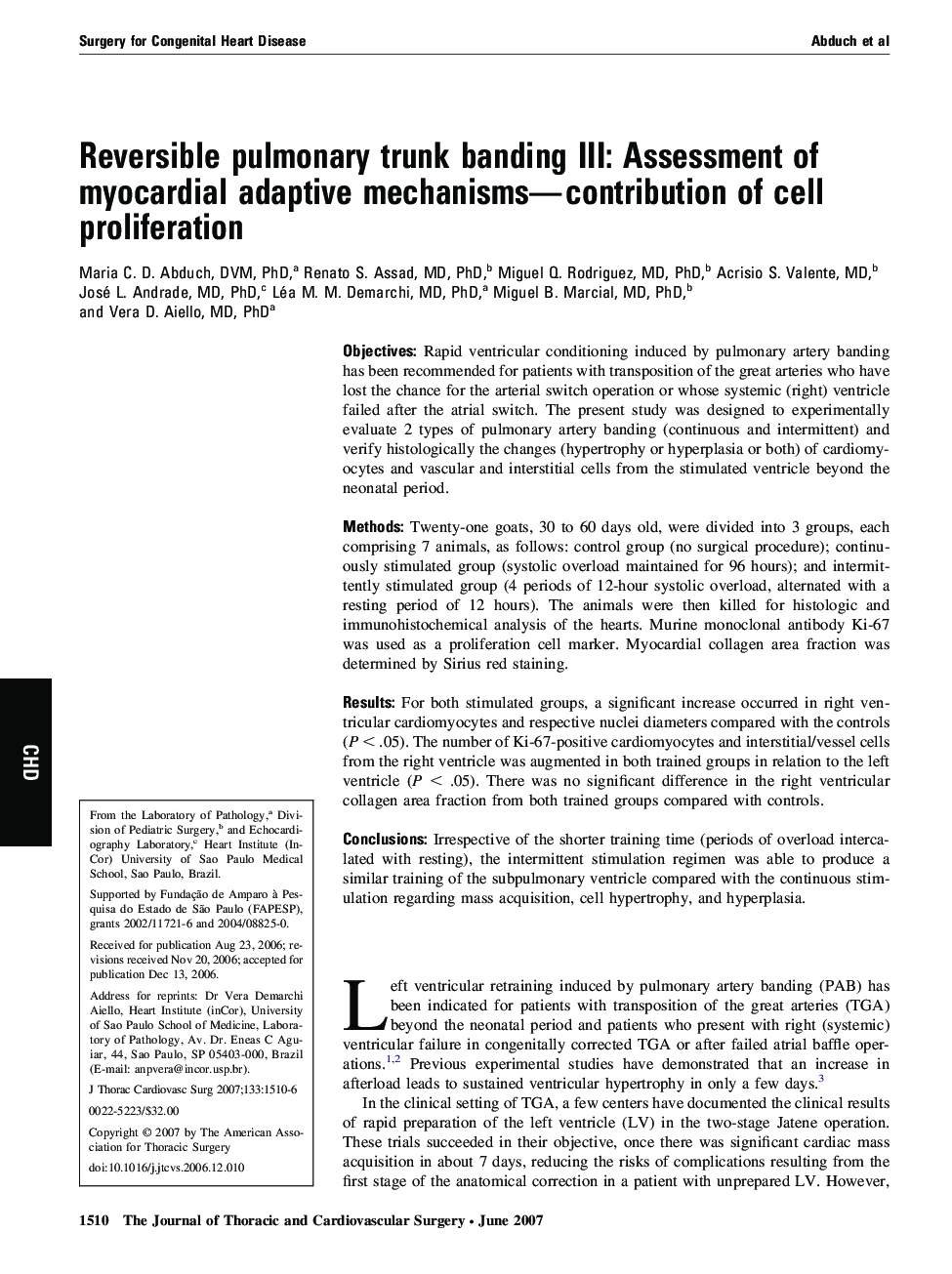| Article ID | Journal | Published Year | Pages | File Type |
|---|---|---|---|---|
| 2983836 | The Journal of Thoracic and Cardiovascular Surgery | 2007 | 7 Pages |
ObjectivesRapid ventricular conditioning induced by pulmonary artery banding has been recommended for patients with transposition of the great arteries who have lost the chance for the arterial switch operation or whose systemic (right) ventricle failed after the atrial switch. The present study was designed to experimentally evaluate 2 types of pulmonary artery banding (continuous and intermittent) and verify histologically the changes (hypertrophy or hyperplasia or both) of cardiomyocytes and vascular and interstitial cells from the stimulated ventricle beyond the neonatal period.MethodsTwenty-one goats, 30 to 60 days old, were divided into 3 groups, each comprising 7 animals, as follows: control group (no surgical procedure); continuously stimulated group (systolic overload maintained for 96 hours); and intermittently stimulated group (4 periods of 12-hour systolic overload, alternated with a resting period of 12 hours). The animals were then killed for histologic and immunohistochemical analysis of the hearts. Murine monoclonal antibody Ki-67 was used as a proliferation cell marker. Myocardial collagen area fraction was determined by Sirius red staining.ResultsFor both stimulated groups, a significant increase occurred in right ventricular cardiomyocytes and respective nuclei diameters compared with the controls (P < .05). The number of Ki-67-positive cardiomyocytes and interstitial/vessel cells from the right ventricle was augmented in both trained groups in relation to the left ventricle (P < .05). There was no significant difference in the right ventricular collagen area fraction from both trained groups compared with controls.ConclusionsIrrespective of the shorter training time (periods of overload intercalated with resting), the intermittent stimulation regimen was able to produce a similar training of the subpulmonary ventricle compared with the continuous stimulation regarding mass acquisition, cell hypertrophy, and hyperplasia.
